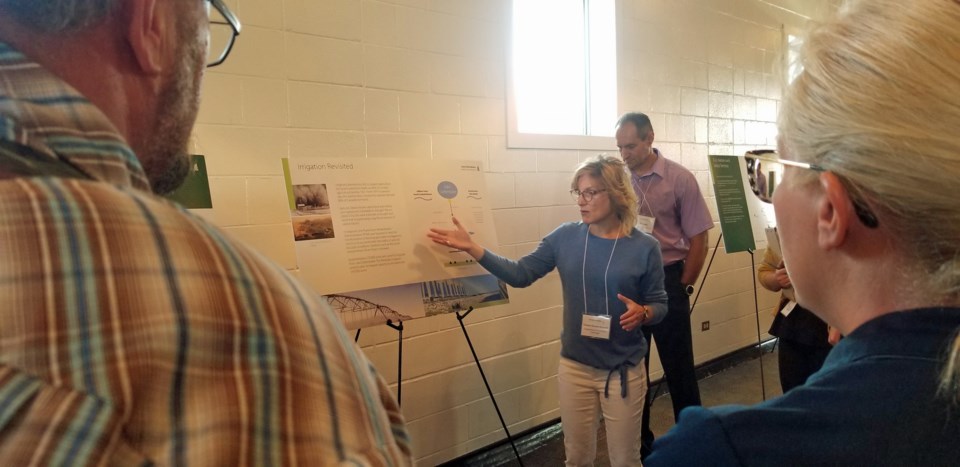The Lake Diefenbaker Irrigation Project is looking to widen the scope of irrigable land in the province, with the first phase beginning with the Westside rehabilitation and expansion. The project, which could increase irrigable land to 500,000 acres, is divided into three phases with an estimated cost of $4 billion and is expected to be completed in 10 years.
Water Security Agency Saskatchewan Executive Director for Communications Patrick Boyle said they organized two open house events to let the people know what the project is all about and what it means. The open houses were held Wednesday at the Delisle Town Hall and on Thursday at the Outlook Heritage Centre.
“Just to let the people know where we’re going. The [open houses] are sort of high-level information campaign on the project. The LDIP is divided into three phases, starting with the Westside rehabilitation. The Westside expansion is the second one and then the Qu’Appelle South Irrigation Project,” said Boyle.
“What we’re doing is to introduce this project and start a dialogue. Effectively informing people this where we are, where we're headed, and where we're going. We’re looking at expanding irrigated acres in Saskatchewan then trying to get to 500,000 acres, which was the original vision when Lake Diefenbaker was built in the late 1950s. Today, we’re somewhere around 110,000 acres.”
Rehabilitating the Westside irrigation canal, where 90 percent is already in place, has an estimated cost of $500 million and will increase irrigable land by 80,000 acres in the villages of Conquest, Macrorie, and Milden. The next phase is expanding the Westside project that would benefit 260,000 acres of land in the towns of Asquith, Delisle and Zealandia, and the village of Vanscoy.
“There’s actually about 42 kilometres of existing canals that have never seen one coordinated system on Project 1, we're going to rehabilitate that. What happened was, in the 1970s, the government back then, built this canal system, but it was decommissioned so we never saw water,” said Boyle.
“What we're doing is rehabilitating that project and adding water to it and then expanding it further north so that the Westside Project effectively goes from Gardner down Lake Diefenbaker, through eventually making its way to Conquest, and then going sort of north to the Asquith-Delisle area.”
The last phase is the Qu’Appelle South that would ensure water would flow down from Lake Diefenbaker to an estimated 120,000 acres of land down south near the communities of Tugaske, Eyebrow, Marquis, and Buffalo Pound Lake. Phase 2 and 3 has a combined estimated cost of $3.5 billion. Phase 3 would also provide a secure water source to the Moose Jaw-Regina corridor and Southern Saskatchewan, which could further fuel industrial expansion in the province.
Boyle said, once the three-phase project is completed, the provincial government is looking at a potential gross domestic product increase of between $40 to $80 billion.
“Expanded irrigation will add acres to your value-added processing. You can look at adding high value crops. It is like when you go the grocery to buy fruits and vegetables and it says United States, when you can have them grown locally.”
“This is important not only for the agriculture sector. This project is kind of visionary in retrospect that it will contribute to everyone in Saskatchewan. Right now, the provincial government is driving forward on the project here. So, we're committed to moving forward and with obviously some recognition that at some point, we'd like a federal partner to join us.”
He said that the project’s completion would also increase the provincial government’s revenue.
“You're looking at roughly about $4.6 billion in tax revenue for the provincial government. You're adding billions in revenue to the province. That means more healthcare funding, more social services, more highways, all sorts of things. There's long-term benefits for the provincial government on this and then for every person in this province.”
Boyle added that they are in the pre-planning and pre-design phases.
“It’s hard to put a timeline on it because it all depends on the data gathering, technical analysis, and getting those reports in. Then there’s engagement and consultation with the public along with the First Nations and Metis communities. There’s a process and steps that go with it.”

